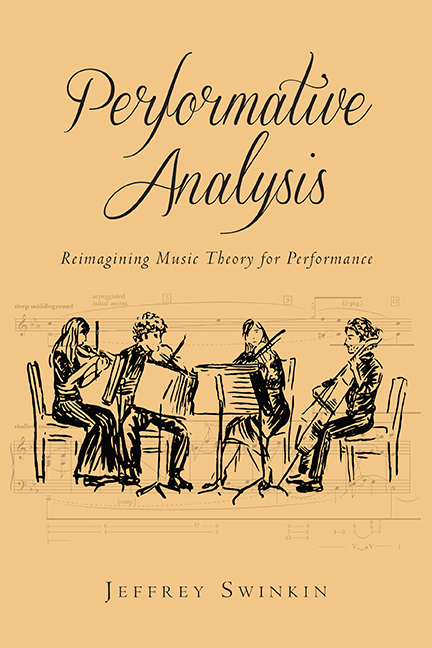1 - Analysis in the Musical Work
Published online by Cambridge University Press: 09 June 2021
Summary
Interpretation is not the art of construing but the art of constructing. Interpreters do not decode poems; they make them.
—Stanley Fish, Is There a Text in This Class?But what if we conceive of analysis as a mode of performance, or as a mode of composing, not as an unveiling of resident truths, not as an exercise in decoding?
—KofiAgawu, Music as DiscourseThe analysis and interpretation of music are, for better or worse, also performances… . Performers inevitably hope that they have reached, moved, and inspired their listeners. Music analysts can only hope for the same.
—Janet Schmalfeldt, In the Process of BecomingIn J. L. Austin's theory, the signal trait of performative utterances is that they are primarily pragmatic rather than denotative. Performative utterances can either inform (these are illocutionary) or induce a certain state of affairs (these are perlocutionary). To offer my own scenario, imagine I say to you, across the kitchen table, “It's hot in here.” I state this not primarily to denote a fact (the temperature) but rather to inform you that I am hot, and, even more, to get you to do something about it—to open a window or come outside with me for some fresh air. In other words, a performative utterance harbors a subtext, one that informs or elicits a particular action or response.
My aim in this chapter and the next is to argue that it is more fruitful to conceive of music-analytical statements as performative than as factual. Take a structural attribution in the form “musical entities x and y are related in z way” and assume the relation z is somewhat nonobvious. I argue that one does better to view this attribution not as an objective fact but as an implicit directive: “hear x and y as related in terms of z; imagine that relation obtains” (rather than presupposing that one already hears x and y in this z way, which may or may not be the case). That is the primary perlocution. The secondary perlocution might be “play y as if it were related to x by z.” Of course, there might be several ways to do that, depending on what x, y, and z are.
- Type
- Chapter
- Information
- Performative AnalysisReimagining Music Theory for Performance, pp. 21 - 41Publisher: Boydell & BrewerPrint publication year: 2017

